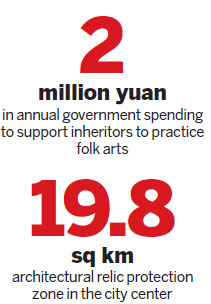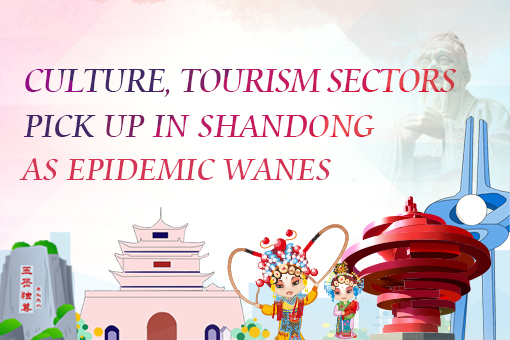Qingzhou's Ming and Qing dynasty styles preserved
Visitors to the ancient town of Qingzhou in Weifang, Shandong province can enjoy Ming Dynasty (1368-1644) and Qing Dynasty (1644-1911) buildings and try 17 folk arts, which are listed as intangible cultural heritages.
Qingzhou's government spends 2 million yuan ($326,491.6) every year organizing 80 inheritors to practice the folk arts, which have made the city a popular tourist destination.
Statistics from Qingzhou's tourism office showed more than 1.19 million tourists visited the city during the National Day holiday, a year-on-year increase of 44.8 percent. The visitors generated 1.41 billion yuan for the city, a 17.92 percent increase year-on-year.
Qingzhou has a population of less than 1 million people and was one of the nine large administrative regions in ancient China for more than 1,600 years.

A number of old buildings and communities in the city showcase the architectural styles of the Ming and Qing dynasties.
Since 2011, the local government has collected historical materials, which total 2 million words, more than 300 video clips and 400 objects that are related to the ancient culture.
The local government invited the National Research Center of Historical Cities at Shanghai's Tongji University to draft a plan for protecting, renovating and rebuilding Qingzhou's ancient remains.
About 19.8 square kilometers in the city center was designated as a protected zone for architectural relics.
To date, the city has invested 2 billion yuan in renovating relics. Structures such as a mosque, a church and the ancient city walls have been restored.
Projects to renovate and rebuild Wannian Bridge, from the Song Dynasty (960-1279), Dongmen Street, from the Ming Dynasty, and Ouyuan Street, from the Qing Dynasty, were completed and are now popular tourist sites.
The government has also made efforts to preserve endangered intangible cultural heritage practices including the traditional game kongzhu, clay sculpture, shuttlecock making and the ancient music instrument cuoqin.
To make visits to all the heritage sites easier, the local government created 22 bike stations where 300 bikes are available to rent. There are also five bus stations.
Museums, snacks, souvenir stalls, inns and antique and painting markets also enrich life in the ancient town.
zhaoruixue@chinadaily.com.cn
(China Daily 10/17/2014 page18)

 Shandong Culture and Tourism Consumption Season
Shandong Culture and Tourism Consumption Season Culture, tourism sectors pick up in Shandong as epidemic wanes
Culture, tourism sectors pick up in Shandong as epidemic wanes

